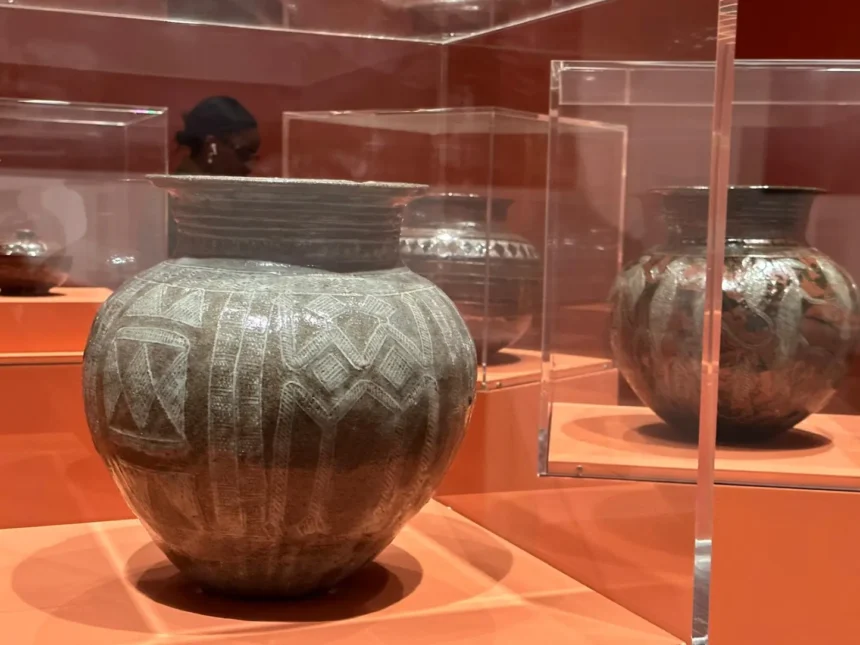Tate Modern has launched a major new exhibition, Nigerian Modernism, a landmark survey that showcases the dynamic artistic revolution of Nigeria through the mid-20th century. The exhibition, which opened on October 8, 2025, features over 250 works by more than 50 trailblazing Nigerian artists, marking the first time a major UK institution has comprehensively traced this pivotal artistic movement.
Spanning a transformative 50-year period—from the 1940s stirrings of decolonisation through the optimism of the 1960 independence era and beyond—the show redefines the global narrative of modern art. It highlights how Nigerian artists challenged colonial hierarchies by consciously fusing Indigenous traditions with European techniques to forge a distinct national identity.
The exhibition explores the rich and often complex journey of Nigerian artists who used their practice as a vehicle for cultural and political resistance. It features a diverse range of mediums, including painting, sculpture, textiles, ceramics, and works on paper, sourced from collections across Africa, Europe, and the US.
Key figures celebrated in the showcase include pioneering artists like Ben Enwonwu—often described as the most influential African artist of the 20th century—the master ceramicist Ladi Kwali, and the globally acclaimed sculptor El Anatsui.
The curatorial focus extends to the influential artistic collectives that shaped the movement, such as the Zaria Arts Society. Formed by students at the Nigerian College of Arts, Science and Technology, the group championed the philosophy of ‘Natural Synthesis’—a deliberate blending of traditional Nigerian visual culture with contemporary expression.
Nigerian Modernism not only celebrates individual genius but also underscores the creation of artistic networks that spanned Lagos, Ibadan, and Zaria, as well as diasporic hubs in London and Paris.
Speaking at the launch, co-curator Osei Bonsu stated that the exhibition aims to situate Nigerian creativity within a global discourse, insisting that artists from the region have long been underrepresented.
The significance of the exhibition was echoed by one of the featured artists, 93-year-old painter and sculptor Bruce Onobrakpeya. Onobrakpeya, a UNESCO Living Human Treasure, called the show “one of the greatest things to have happened, not only to my art, but to Nigerian artwork.”
The exhibition is a testament to the resilience and innovation of Nigerian cultural figures, demonstrating their crucial role in shaping the trajectory of modernism on their own terms.
Nigerian Modernism is on display at Tate Modern in London until May 10, 2026. The exhibition is presented in partnership with Access Holdings and Coronation Group, with additional support from the Ford Foundation and The Andy Warhol Foundation for the Visual Arts.


